10 Interesting and Fun European Starling Facts
Last Updated on
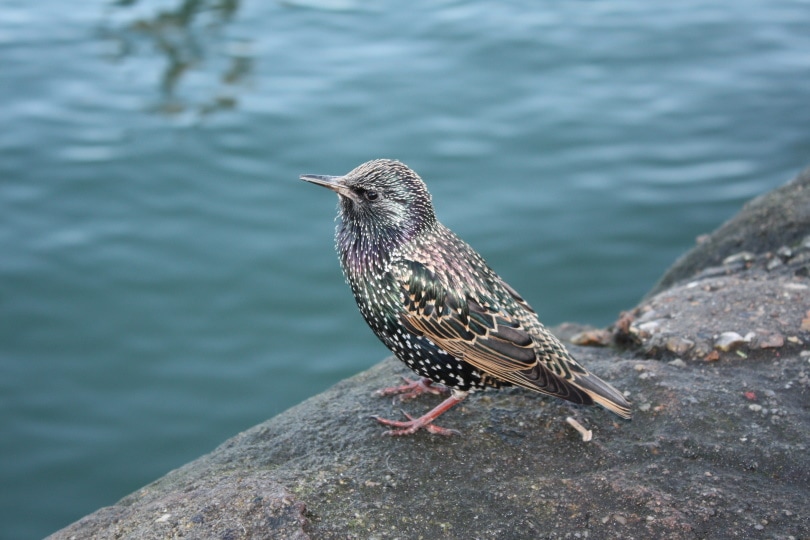
If different birds intrigue you, you are in for a treat. In this article, we will look into some essential facts related to the European Starling. This black songbird is often perceived as fierce and aggressive. However, it also has a certain degree of wariness, making it hard for anyone to capture it.
European Starlings are bold, making them easily adapt to any habitat. So, whether it’s the cities, farms, or parks, you will see these birds wandering almost everywhere without worrying about anything in the world.
If you delve deeper, you will find a European Starling to be one of the most interesting birds on this Earth. So, to help you know more, we have listed 10 fun and interesting facts about this bird. Dig in to find out.

The 10 Most Interesting and Fun Facts About European Starlings
1. European Starlings Entered America in the 1980s

There is an interesting story behind this fact. These birds entered America in the 1980s when hundreds and thousands of birds were released in the Central Park in New York.
The intention of releasing them was that America should have all the birds that Shakespeare mentions in his books, poems, and tales. So, inspired by Shakespeare’s writings, European Starlings have been found flying around buildings, parks, and fields of America.
2. This Bird Changes Its Appearance Every Season
A European Starling has a stocky body with unique white spots during winter. However, as the summer season approaches, the bird’s body color gets darker and shimmery, except for the upper wings.
What’s more, while on a flight, the bird’s less-pointed wings change into a triangle shape while its tail remains short. Also, as soon as winter comes, the bird’s sharp and long beaks turn from gray to yellow.
When it comes to weight and size, a European Starling’s length remains between 7–9 inches long, while its weight fluctuates between 55–101 grams.
3. These Birds Can Eat Anything
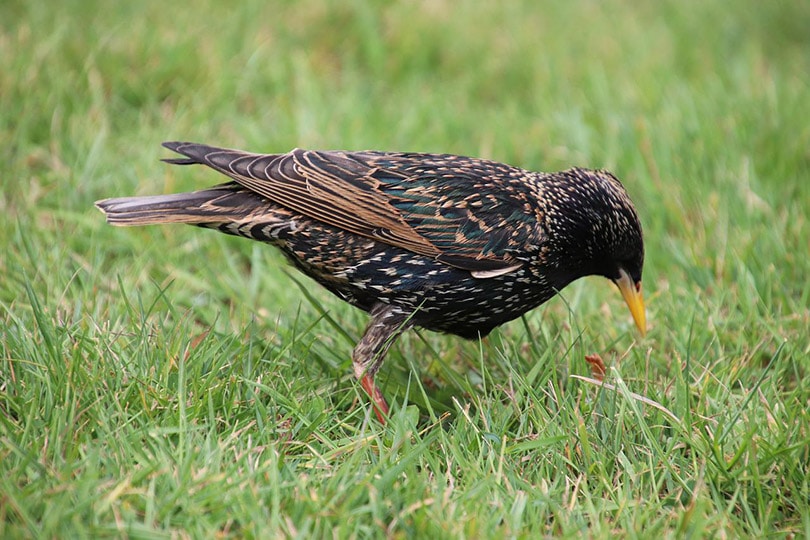
Interestingly, the European Starlings can consume anything. This is why you may find them everywhere. From parks to buildings, these birds are pretty much always busy in the search for food. However, these birds are not a fan of wild areas and deserts.
European Starlings hunt down objects such as spiders, butterflies, grasshoppers, and earthworms when looking for food. But when there are few insects available, they look for seeds and fruits.
In fact, a few studies revealed that these birds have a strong sense of taste. They can easily taste sugar, tannins, and citric acid, all types of bitter compounds found in various fruits. These birds can also differentiate between table sugar and other forms of sugar. Since they can’t digest sucrose, this quality helps European Starlings consume the right type of food.
4. European Starlings Reproduce in Summer and Spring
European Starlings consider warm seasons favorable to reproduction, such as spring and summer. During a single season, female birds lay four to six eggs through a daily process. The eggs laid are either blue or white in color.
These birds can reproduce twice a year and are not hesitant to lay eggs in each other’s nests. In fact, a female bird can lay her egg in the other female’s nest without disruption.
Some female birds try the parasitic tactic, and these are the ones that don’t get a male bird to mate at the start of the breeding season. Birds that take longer to start breeding often face a decreasing chance of their nest’s success.
Finally, once born, the baby starlings take only 21 days before they are on their own.
5. They Communicate Loudly
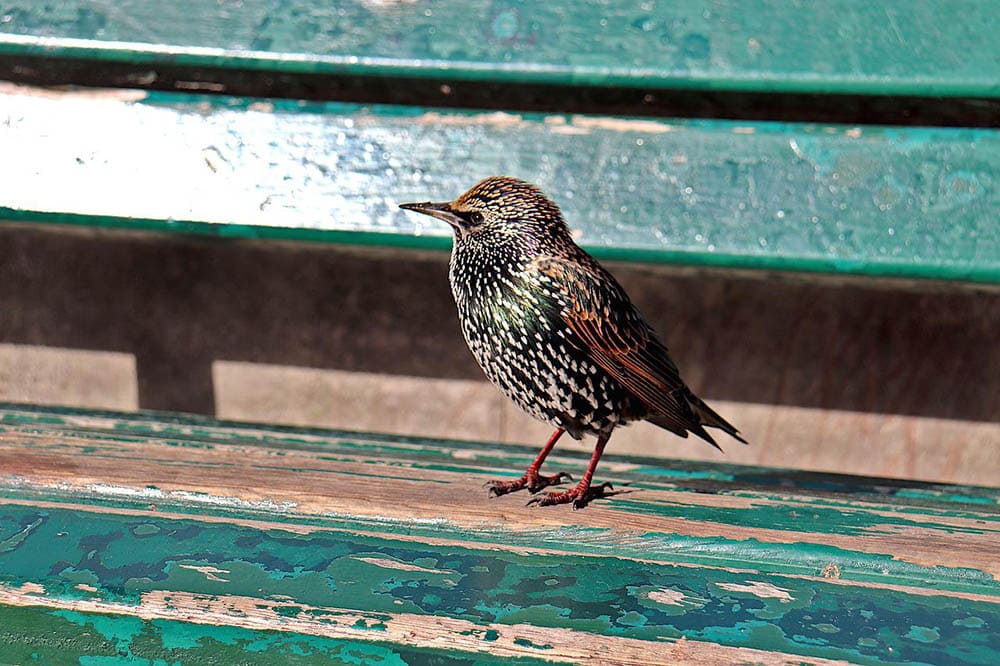
Believe it or not, European Starlings are one of the loudest birds on this planet. They are highly vocal and only remain quiet when molding.
The male birds love creating warbling, gurgling, and creaking sounds. Also, the birds love to chatter and whistle and produce rattles and liquid sounds.
European Starlings are excellent mimics and can copy the sounds of other birds. When they need to make a call, they choose varying sounds and pitches to create warning sounds.
6. These Birds Molt
Once every year, European Starlings go through the procedure of molting. During this phase, they shed their feathers, which often happens during summer. Then, the shredded feathers are replaced by new and fresh ones.
A newly molted bird has white spots on its black plumage, which start to turn dark as the weather gets colder.
7. They Can Cause an Infestation
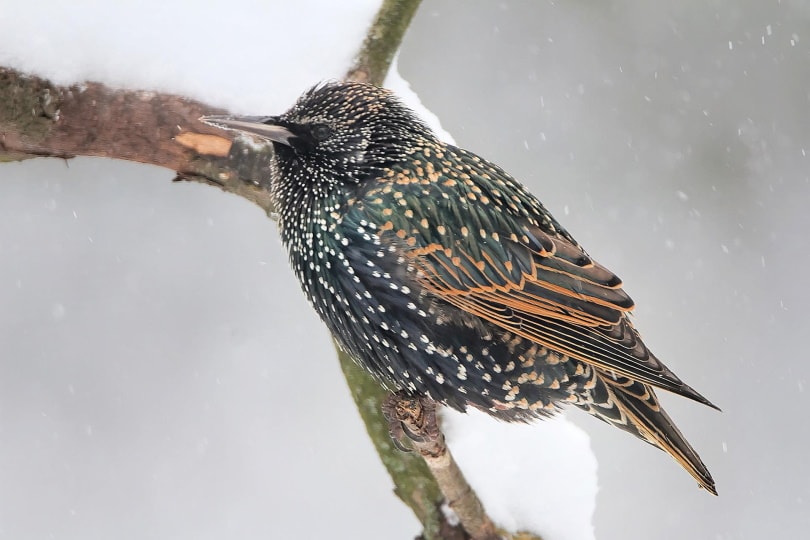
Unfortunately, while these birds look innocent, they have all the qualities to cause infestation. They consider human dwellings a perfect spot to build their nest, so if you find them flying around your place, it is time to take action.
Unfortunately, the droppings of these birds have fungi, which can be very dangerous to your health. Besides, these droppings can also ruin your building’s structure with time.
So, if you spot a nest near your place, it is best to take measures to get rid of it because the birds might be slowly planning to take over.
8. They Are Smart Birds
European Starlings are smart birds that can easily find their predators from a long distance and can alert their fellows to fly away. Further, they can even find food hidden deep into the soil.
These birds have pointed and sharp beaks that make it easy to dig deep and find something to eat.
9. Some Common Problems Related to European Starlings

Do you know that European Starlings are often considered a problem regardless of their attractive features? That’s because they can easily damage crops by eating them instead of pests. In addition, they often enter the fields in large groups and can damage the crops daily.
Moreover, as mentioned earlier, these birds are aggressive. This means that they have the capability to wipe off all other birds around them.
European Starlings often carry transmissible diseases and can result in substantial sanitization problems. Therefore, having them around signifies that you should get rid of them. But, you can opt for other safe methods instead of killing these birds.
10. The Oldest European Starling
Interestingly, the oldest European Starling in the region of North America was found to be male. This bird was at least 15 years and 3 months old before his death in Tennessee. His death happened in 1972.

Natural Methods to Get Rid of These Birds
Whether a bird is annoying or not, killing them is not an option in any case. But stubborn birds, such as European Starlings, are challenging to deter. They are intelligent and have all the qualities to reproduce quickly.
Having them around is also unsafe, as they easily lead to an infestation. But thankfully, there are a few methods that can keep you safe from them. Below we have shared some tips to keep European Starlings at bay and away from your homes.
- These birds get attracted to your house because of the water and food they might get there. So, if you don’t want them around, remove all the sources of food that meet their needs. Keep your trash cans closed at all times and remove any food that you may have for the pests.
- Interestingly, these birds are always hunting for areas that can make a perfect place for nesting. If you have holes in your walls, windows, or building, fill them up so these birds fly away somewhere else. Avoid keeping any gaps unsealed.
- Starlings are afraid of their predators, and the best way to get rid of them is by scaring these birds. Artificial predators such as owls can help frighten these birds. In addition, you can also get hold of things such as sonic devices and scary eyes to keep these birds at bay.
- You can also get rid of European Starlings by decreasing their population. For instance, if you find any nest in your area, simply remove it and trap the bird. Relocate the nest somewhere else. If the infestation is unbearable, slow-acting poisons can also be helpful, but it is best to call a professional for help.
- You can also use a gel repellant that helps bump these birds’ roosting spots. If you know all these places, apply the gel to them. This gel isn’t dangerous—it only helps keep the birds away.
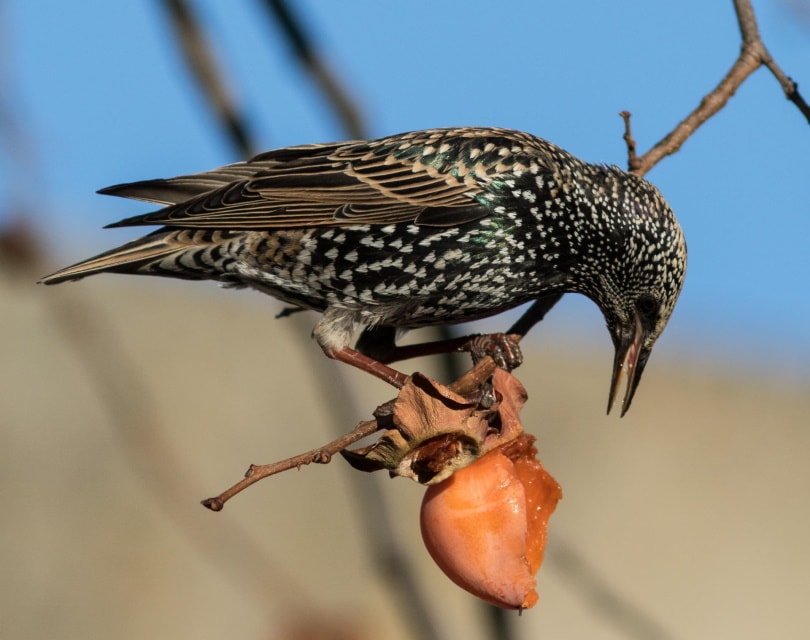

Final Takeaway
European Starlings are some of the most beautiful birds with unique appearances and features. While these birds can be loud and annoying, they have many smart qualities of survival, making them much more intelligent than most other birds.
We hope that the above facts have helped you know about these birds in a better way. Also, if you spot them more than usual around your building, know they have a cunning plan in mind that may lead to an infestation. So please take timely measures before anything dangerous happens.
Featured Image Credit By: Piqsels
Table of Contents
- The 10 Most Interesting and Fun Facts About European Starlings
- 1. European Starlings Entered America in the 1980s
- 2. This Bird Changes Its Appearance Every Season
- 3. These Birds Can Eat Anything
- 4. European Starlings Reproduce in Summer and Spring
- 5. They Communicate Loudly
- 6. These Birds Molt
- 7. They Can Cause an Infestation
- 8. They Are Smart Birds
- 9. Some Common Problems Related to European Starlings
- 10. The Oldest European Starling
- Natural Methods to Get Rid of These Birds
- Final Takeaway
About the Author Jeff Weishaupt
Jeff is a tech professional by day, writer, and amateur photographer by night. He's had the privilege of leading software teams for startups to the Fortune 100 over the past two decades. He currently works in the data privacy space. Jeff's amateur photography interests started in 2008 when he got his first DSLR camera, the Canon Rebel. Since then, he's taken tens of thousands of photos. His favorite handheld camera these days is his Google Pixel 6 XL. He loves taking photos of nature and his kids. In 2016, he bought his first drone, the Mavic Pro. Taking photos from the air is an amazing perspective, and he loves to take his drone while traveling.
Related Articles:
10 Types of Hummingbirds in Arkansas (With Pictures)
8 Types of Hummingbirds in Nebraska (With Pictures)
5 Types of Hummingbirds in Idaho (With Pictures)
3 Types of Hummingbirds in Mississippi (With Pictures)
8 Types of Hummingbirds in Kansas (With Pictures)
5 Types of Hummingbirds in West Virginia (With Pictures)
5 Types of Hummingbirds in Ohio (With Pictures)
Where Do Nuthatches Nest? Nuthatch Nesting Habits Explained
